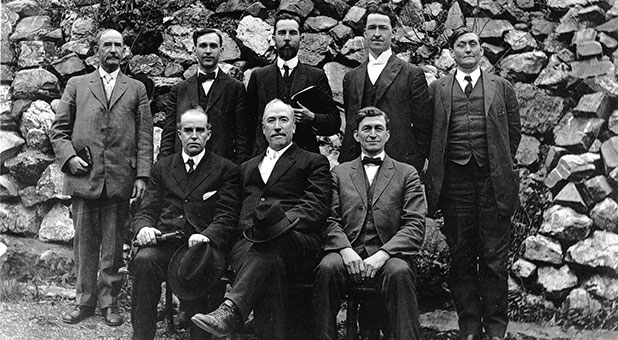Birth of a Pentecostal Giant: The AG’s Origin Story
No one imagined the world would be changed out of an old, dilapidated building at 312 Azusa Street in downtown Los Angeles. Yet in the aftermath of the Azusa Street revival (1906-09), the Pentecostal message spread as fast as word of mouth could carry it, shaping history from that point on.
As hundreds of independent Pentecostal churches and missions were birthed throughout the country, however, problems and confusion arose along with them. Strange teachings surfaced, and many Pentecostal preachers with little or no formal education didn’t know how to address doctrinal aberrations. Problems also cropped up on the foreign mission field, with some missionaries returning home without establishing a lasting work and others seeming to spend most of their time traveling to and from the field. Some leaders began to realize the need for some sort of cooperative fellowship that would quell the problems independent churches could not handle on their own.
Against this background, a call was published in the Dec. 20, 1913 issue of the Word and Witness for a general council to be convened April the next 2-12 at the Grand Opera House in Hot Springs, Arkansas. The call was addressed to all Pentecostal churches and assemblies “who desire with united purpose to cooperate in love and peace to push the interests of the kingdom of God everywhere.” This call came from the leaders of two groups of Pentecostals, one in Texas and one in Alabama, both known as the Church of God in Christ.
The group in Texas originally had been a part of Charles Fox Parham’s Apostolic Faith association. When some members decided to sever ties with Parham, they formed the Church of God in Christ and in Unity with the Apostolic Faith, which had loose ties—possibly in name only—to Charles H. Mason’s network of black churches, the Church of God in Christ. Though the two groups knew and respected each other and on occasions engaged in ministry together, there were no legal ties, and both functioned independently. E.N. Bell, a seminary-trained Baptist from Fort Worth, rose to prominent leadership of this Texas group and was the editor of their paper, the Apostolic Faith.
In 1913, the group merged with a small denomination in Alabama with the same name. The Alabama group was led by M.M. Pinson and H.G. Rodgers, both of whom had been baptized in the Holy Spirit through the ministry of G.B. Cashwell. The new organization retained the name Church of God in Christ and appointed Bell to edit their paper, Word and Witness.
The convention convened April 2, 1914 with more than 300 in attendance from 20 mostly Midwestern states. About 120 registered as ministers or missionaries and official delegates. Prominent names in the movement were present: John G. Lake, F.F. Bosworth, J. Roswell Flower and, of course, Bell, Rodgers and Pinson. Because many Pentecostals distrusted the idea of organizing, the conveners of this convention set aside the first three days for prayer, worship and hearing reports and testimonies from those in attendance. This relaxed the tensions and cultivated a sense of unity.
As participants prayed and praised, they felt a distinct sense of God’s presence filling the old opera house. One participant recalled a “halo of glory” that rested over the sessions. Pinson brought the keynote address titled “The Finished Work of Calvary,” which clearly indicated this incipient organization’s stance on the controversial subject of sanctification.
From these humble roots came a denomination that, though tested immediately in its early years, has grown to become the world’s largest Pentecostal denomination with a global constituency of more than 67 million and an American constituency of over 3 million.







































